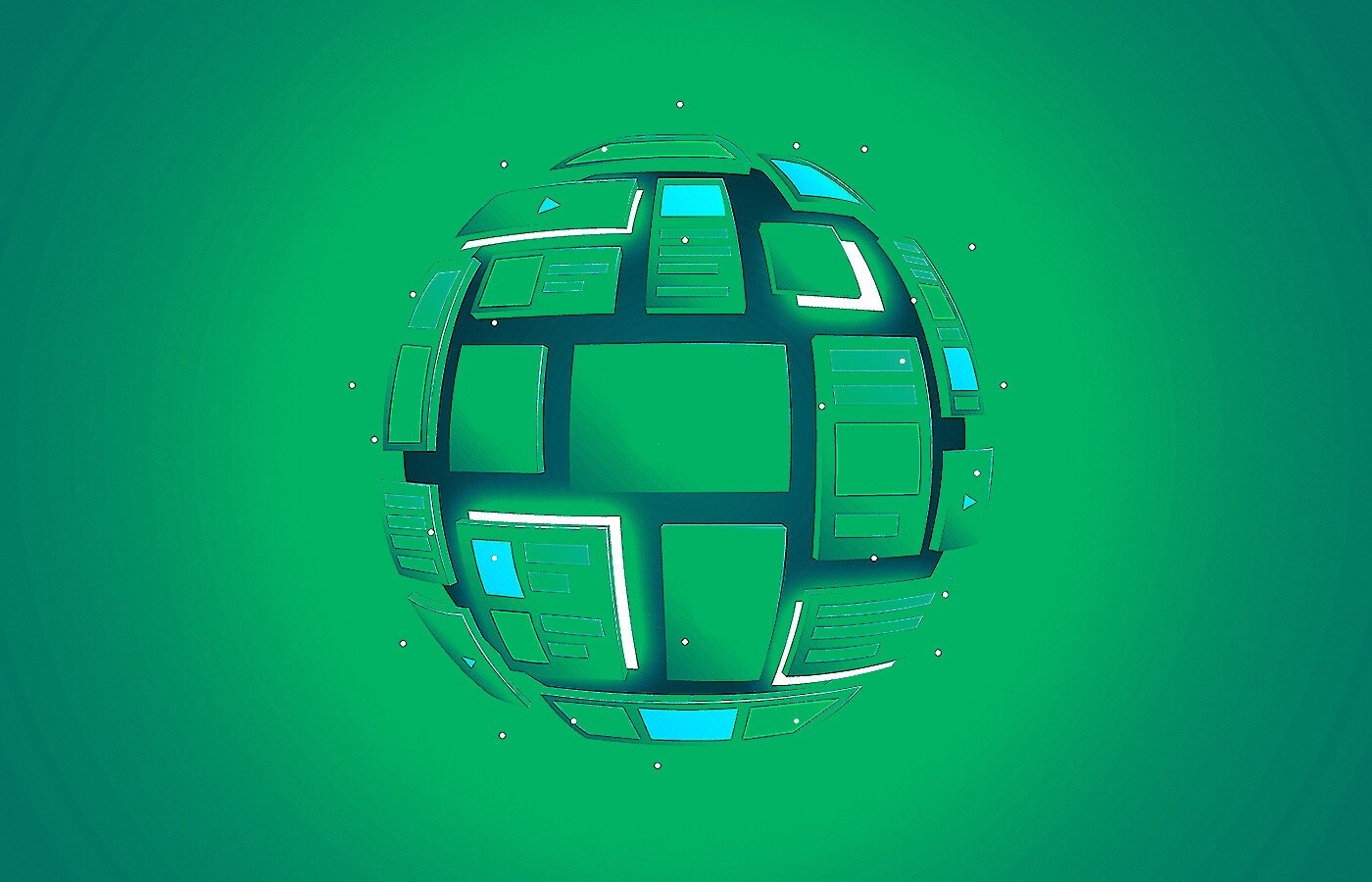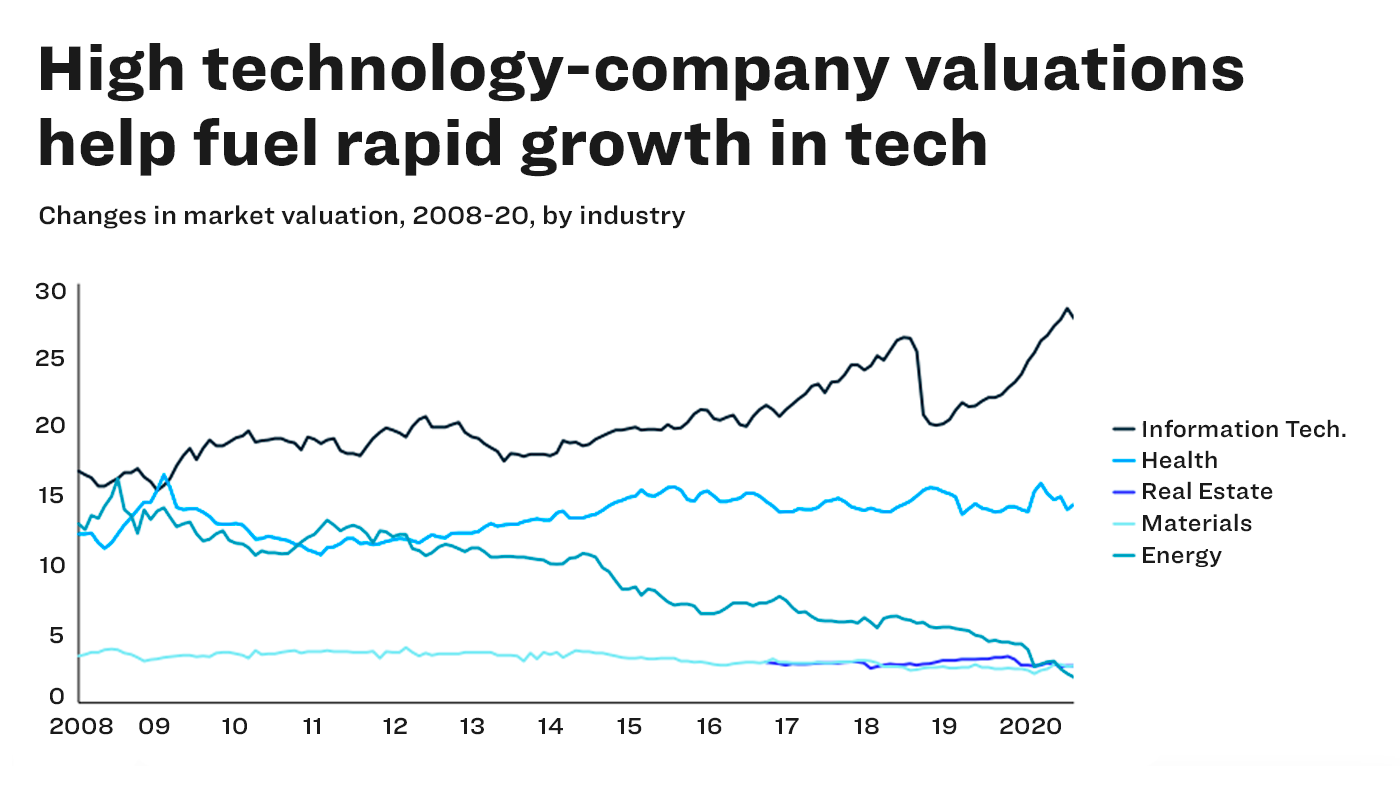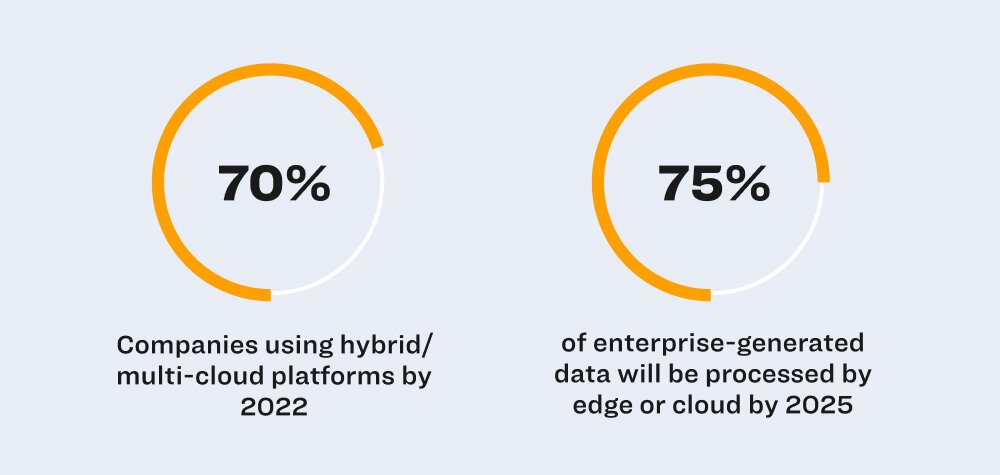blog
7 Leading Trends in Tech Re-Shaping the World
By Siddhant Chaudhary Business May 6, 2022

Advancing technology has always brought about economic development. Based on Maddison’s GDP Statistics on World Population, the global GDP per capita increased by a factor of 10 since the 18th Century.
This exponential economic growth experienced during the second and third industrial revolutions was brought solely by technology progression - internal combustion engines in 1867 (2nd) and the internet in the 1970s (3rd). Digitalization is paving the way to the 4th industrial revolution which will be accelerated 10x by more technological advancements.
Digital transformation is underway. It is not only transforming jobs and skills but also entire industries like retail, aviation, banking, and more. “In the next decade, we will experience more progress than in the past 100 years,” said Peter Diamandis, the cofounder of Singularity University.
Accelerated Company Valuations For High-Tech Companies

According to Bloomberg reports (2008-2020), IT stocks have returned close to 27% in 2020 which, in 2008, were roughly around 16%. On the other hand, the valuations of the Materials and Real Estate industries have remained close to 3-4% in the entire 2008-2020 span. The Health industry has also shown no significant improvement, valuations ranging from 11% to 15%. The Energy industry, however, experienced a downfall from 10-15% to less than 5%.
The S&P 500 member weighting of the above-mentioned companies clearly shows how the IT stocks have consistently outperformed the rest of the market. This benchmark index for large U.S. corporations also reveals how the companies that invest in high technology have expedited their valuations and will continue to, in the future.
This proves that technological innovations are happening at an unrivalled pace. And the top 7 tech-trends that are predicted (according to a recent report from McKinsey) to reshape & redefine the world in terms of how work is done are as follows -
1. Next Level Process Automation & Process Virtualization
Next-level process automation includes industrial IoT (IIoT), robots, cobots - collaborative robots, and robotic process automation (RPA). These technologies combine to remove repetitive manual tasks (data entry, extraction, etc.), simplify customer interactions, and speed up the processes. We’ve seen this working in the aviation industry with automated seat booking, check-in, flyer-mile management, and likewise easing our lives. Process virtualization, on the other hand, includes advanced simulations using digital twins and 3D/4D printing to change how products are developed.
Process Automation & Virtualization Reshaping The Future
McKinsey predicts that the automation process will flourish to an extent where half of today’s existing work will be automated by 2025. It also states that by 2022, around 70% of manufacturers will use digital twins on a regular basis and by 2025, over 50 billion devices will be connected to the IIoT. Even Gartner expects the hyper-automation-enabling software market to reach $600 billion by the end of 2022.
Disruption Caused By This Cross-Industry Trend
Since self-learning robots will take over the physical processes beyond routine activities, less manpower will be needed in these activities. Policy-makers will, thus, have to address labour replacement along with finding ways to re-skill employees for more complex tasks; all the while figuring out the future of work where humans and machines can work in tandem. Virtualization, on the other hand, will make development cycles dramatically shorter as it would dematerialise processes, thereby pressurising profit pools. This will accelerate the strategic and operational practices that are directly proportional to successful digital efforts.
2. The Future of Connectivity
This trend combines 5G and IoT (Internet of Things) to give faster connectivity across longer distances. This will lead to exponentially faster downloads and almost no latency. The business landscape will therefore shift, leading to new business models, new services, and heightened customer experience.
Superfast Connectivity Reshaping The Future
5G - either high-band or low- to mid-band - is expected to reach up to 80% of the global population, McKinsey predicts. This will help new sensor-enabled personalised services and business models to emerge. The customer experience will also be heightened because of new value-chain offerings like predictive services and high-augmented services.
Disruption Caused By This Cross-Industry Trend
Security leaders already face issues protecting IoT. With its wide adoption across the globe, things will turn complicated even further. Data protection will continue to be a pressing concern.
3.Distributed Infrastructure
Distributed Infrastructure uses cloud and edge computing that enables companies to reach data-hungry devices with low latency across the remotest of the remote locations. With advanced analytics on demand, decision making is made easier and faster, saving costs and strengthening cybersecurity defences.
Distributed Infrastructure Reshaping The Future
Around 70% of companies will be using hybrid or multi-cloud platforms by 2022 as part of a distributed IT infrastructure, McKinsey report states. It further predicts how, by 2025, more than 75% of enterprise-generated data will be processed by edge or cloud computing. Software sourced by companies from cloud-service platforms, open repositories, and software-as-a-service providers will rise from 23% today to nearly 50% in 2025 and is expected to jump to 80% if the adoption accelerates.

Disruption Caused By This Cross-Industry Trend
“Wide availability of IT infrastructure and services through cloud computing will vaporise on-premise IT infrastructure and commoditize IT setup and maintenance, while the democratisation of infrastructure will help shift competitive advantage away from IT to software development and talent.” - McKinsey.
4. Next-Generation Computing
Next-generation computing uses quantum computing and neuromorphic computing. The latter involves the development of ASICs - application-specific integrated circuits. It can help find answers to questions that have kept society and science boggled since forever. This tech-trend will greatly reduce hardware costs in IT, accelerate autonomous vehicles with quantum AI, and cut development time for chemicals with simulations.
Next-Generation Computing Reshaping The Future
McKinsey estimates that the value of potential quantum-computing use cases at full scale by 2035 will be greater than $1 trillion.
Disruption Caused By This Cross-Industry Trend
The first-wave industries (finance, travel, etc.) need to be very careful about trade secrets and confidential data during the shift from current to quantum cryptography. The other industries also need to keep track of this trend. This is because quantum computing is likely to break the majority of modern cryptographic security algorithms, says McKinsey.
5. Applied AI
Applied AI, even though in its nascent stage, uses computer vision, natural language learning, and speech technology, helping computers make sense of the real-world raw data. We already see it booming in the IT sector with specialised tools that create quality content, understand speech commands, and likewise.
Applied AI Reshaping The Future
One billion connected cameras collected and shared visual data in 2021, says McKinsey. Not just this, the company estimates more than 75 percent of all digital-service touch points (e.g. voice assistants) have seen improved usability, enriched personalization, and increased conversion.
Disruption Caused By This Cross-Industry Trend
Applied AI tech growth will automate repetitive tasks, eliminating labour. It will also enable new applications by processing data to uncover detailed customer insights along with letting engineers work remotely on repairs.
6. Future of Technology
Future of technology relates to the rise of Software 2.0. Under this, neural networks and machine learning will be used to write code and create new software. It will give way to a more iterative and intuitive code which will also reduce programming errors.
Future of Programming Reshaping The Future
McKinsey predicts as much as about a 30 times reduction in the time required for software development and analytics.
Disruption Caused By This Cross-Industry Trend
While Software 2.0 creates new ways of writing software and reduces complexity, companies will need to master DataOps and MLOps practices and technology to make the most of the future of programming. This is if they want to scale their software-development capabilities. Because Software 2.0 will promote fewer codes, fewer DevOps will be needed. Hence, talent evolution will have to take place.
7. Trust Architecture
The last trend, trust architecture puts to use zero-trust security model and blockchain. With 8.5 billion data records compromised in 2019 alone, this tech trend will provide structures for verifying the trustworthiness of devices as data flows across networks, APIs, and applications.
Trust Architecture Reshaping The Future
According to McKinsey analysis, around 10% of global GDP could be associated with blockchain by 2027.
Disruption Caused By This Cross-Industry Trend
“Countries and regulatory bodies may likely have to rethink their current regulatory oversight of the flow of wealth. DLTs(Distributed Ledger Technology) will reduce cost before they enable transformative business models. Efficiencies arise by speeding transactions in both the private and public sectors, among other ways,” quotes McKinsey.
Impacts Of Tech Trends On Different Industries
While these technology trends will affect all sectors, the impact across industries will vary. For example, Applied AI, next-level process automation, and the future of programming will witness maximum impact across all industries. Also, the most impacted industries by different tech trends will be pharmaceuticals, information technology, and telecommunications. While the future of connectivity will have limited impact on advanced industries & chemicals, next-generation computing won’t affect the health industry much.
Primary Questions for Executives to Think Through
There are 3 primary questions that executives must ask while making an investment in technology trends. When and where to invest apart from accurate timing must also be considered.
1. Questions On Scale Of Impact
How important is this trend for a given company or industry?
Will implementing the technology give the company an edge?
Which technologies matter the most for what companies?
Will the new technology disrupt the existing value pools.
2. Questions On Technical Maturity
How fast do you need to react to the trend and implement it?
Is it the right time to scale a technology - based on its stage and maturing speed?
3. Questions On Organisational Fit
How to approach the technology implementation?
How should you operationalise technologies to capture value?
Five Primary Risk Areas
Business, society, operational risk, compliance, and legal are the five primary risk areas. They will have to be safeguarded to maintain data ethics, internal awareness, and matters of legality. The development of appropriate and robust processes is a must along with proactive measures of the same.
Conclusion
McKinsey examined six-proxy metrics - patent filings, publications, news mentions, online search trends, private-investment amount, and the number of companies making investments, to identify technology trends that matter the most to top executives and their organisations. They may not be the talk of the town but will soon make a major impact on industries, across all sectors.


